Enhanced Powder Production Enables Crack-Free High Temperature Nickel Superalloy (H-X) Parts by Additive Manufacturing
Sandvik Osprey Ltd. was founded in 1974 as Osprey Metals Ltd. by three former Swansea University students to commercialise their newly invented ‘spray forming’ process for the manufacture of alloys with refined microstructures. Since that time it has grown to become a world leader in the fields of powder metallurgy, controlled expansion alloy solutions and advanced brazing materials.
Sandvik Osprey Ltd. has accumulated over 40 years of know-how in the field of gas atomization; knowledge that it leverages today to manufacture a diverse range of high quality metal powders using its own proprietary technology. These metal powders are used in a wide range of advanced technologies including metal injection moulding (MIM), additive manufacturing/3D printing (AM) and metallic coatings.
Sandvik Osprey produces high temperature nickel alloy (H-X) powders for a range of industrial applications that require superior performance. In the field of AM, however, the use of H-X has been limited to date due to problems with hot cracking, which occur during the laser melting process.
Sandvik Osprey decided to collaborate with the ASTUTE 2020 programme to gain a better understanding of the mechanisms controlling hot cracking and to assess different approaches to the elimination of microcracks in am fabricated H-X parts, including (1) optimization of the alloy composition and (2) use of nanoparticle additions.
Enabling the production of crack-free parts in H-X through Additive Manufacturing will open up the potential for new industrial applications, which will hopefully in turn increase the demand for high quality nickel superalloy powders.
Challenges
H-X is typically used for gas turbine operations, petrochemical and structural components, manufactured from wrought or solid materials. Currently, Sandvik Osprey produces H-X powder for AM, MIM and cladding applications that require superior performance. Developing a suitable powder for metal AM would enable direct manufacture of complex-shaped parts e.g. for gas turbine components and would significantly extend the application areas for this high performance material. However, due to the hot cracking issue, H-X has not been widely implemented for metal AM.
Solution
ASTUTE 2020’s expertise in advanced materials technology aimed to address the current issue of material micro-cracking during the building of H-X parts via the powder bed fusion process.
To address the hot cracking issue seen in AM of H-X, the following technical approaches have been conducted between ASTUTE 2020 and Sandvik Osprey:
- Characterisation of ‘conventional’ H-X by laser powder bed fusion (L-PBF): the microstructure and mechanical properties (i.e. tensile) of the L-PBF fabricated conventional H-X have been investigated to understand the mechanism of crack formation and the distribution of cracks.
- Modification of the conventional H-X powder while maintaining the required mechanical properties: in terms of the expertise in nanoparticle theory research at Cardiff University, the interactions between Ni alloy components and various nanomaterials have been considered to evaluate potential nanoparticle additions.
- Optimisation of alloying composition in different H-X variants: the optimisation was performed by measuring the relative density of L-PBF fabricated cubic samples (8x8x8 mm) using archimedes method.
In particular, a reduction in the occurrence of hot cracking was achieved through:
- Optimisation of the processing parameters in different H-X variants.
- Optimisation of the alloy composition.
- The addition of suitable nanoparticles to eliminate micro-cracking within additive manufacturing of H-X.
In all cases, a comparison of the mechanical properties for the enhanced state was made with the initial baseline to confirm the impact on material performance.
Impact
Optimisation of the H-X alloy for am applications supports Sandvik Osprey’s growth ambitions in the area of high temperature nickel alloys.
Additional benefits arising from the collaboration included:
- Increased understanding of nickel superalloy metallurgy.
- Increased expertise in laser powder bed fusion technology.
- Opportunities for future research and development.
The collaboration has given Sandvik Osprey a platform to support further development of its portfolio of nickel base superalloys tailored to AM applications. This collaboration has enabled the ASTUTE 2020 team to use the nanoparticle technology to address hot cracking issues in other industrial superalloys, which are also susceptible to such problems.
There are few viable alternatives to H-X for extreme temperature and corrosion resistance. Manufacturing by AM can increase material utilization and reduce manufacturing scrap leading to improvements in the overall environmental footprint. By harnessing the increased design freedom that manufacturing by AM allows supports new and advanced burner designs can also be realized, delivering improved fuel efficiency and consequently reducing emissions.

